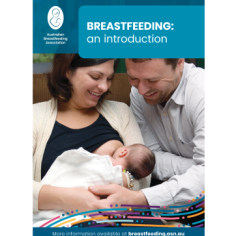Breasts slow to let down? There are things you can do to get the milk to flow.

The let-down reflex (or milk ejection reflex) is an automatic natural reaction that happens in your body when your baby starts to breastfeed.
There are nerves in your nipples that are triggered by your baby’s sucking. These nerves cause two hormones to be released into your bloodstream.
Prolactin is responsible for making more breastmilk.
Oxytocin causes the let-down reflex so your milk flows.
The milk-making cells in your breast contract and squeeze out the milk, pushing it down the ducts towards the nipple. Oxytocin also makes the milk ducts widen, making it easier for the milk to flow down.
This pushing out of milk is known as the let-down reflex or the milk ejection reflex. It happens at the beginning of feeds but there will also be several more throughout the feed, though you may not notice these.
How do I know it's working?
You might notice some of these signs:
a tingling feeling
a feeling of sudden fullness which can be quite strong, even painful sometimes.
milk leaking from the other breast (let-down happens on both sides at the same time).
feeling thirsty
Some mums don’t notice any physical signs but...
Everyone should notice this sign:
Your baby starts to suck deeply and rhythmically.
A sure sign that you’ve had a let-down is a change in your baby’s sucking pattern. The quick, shallow suck-suck changes to a rhythmic suck-swallow pattern as the milk begins to flow and your baby starts to drink deeply.
You may also find that you get a let-down if you see or hear your baby, or even just think about them. The let-down becomes a conditioned reflex, so your breasts will respond to certain ‘cues’ like a baby crying (even if it’s not your baby!).
I don't think my let-down is working
Usually, your baby’s sucking at the breast will be enough to trigger the let-down and get your milk flowing.
Some things may delay your let-down or cause your milk flow to be slower:
feeling stressed or anxious - because stress hormones can inhibit the oxytocin that triggers your let-down
being in pain or uncomfortable
feeling very tired
being embarrassed or self-conscious, such as when feeding in public or trying to express at work
If you’re expressing, then it can be a bit harder to get a let-down. Your baby is better at doing this than your pump and you just need a few techniques to help.
People often say that your milk supply can be impacted if you are very anxious, extremely tired, upset or in pain. The truth is that breastfeeding is a powerful process. Your let-down may take a little longer than usual, causing your baby to fuss at the breast or come on and off but your supply won’t be affected,
As your baby gets older, you may not notice your let-down as much as you used to. If your baby still sucks deeply and stays feeding at your breast, then it’s probably working just fine.
What can help me get a let-down?
While you feed or express, breathe slowly and deeply.
Drop your shoulders and relax your upper body and arms.
Put your feet up as you feed or listen to calming music.
Try having a warm drink.
Have a warm shower before feeding.
Place a warm washer on your breast for a few minutes.
Try distracting yourself. Worrying about the let-down can delay it further.
If you’re using a pump, you might find popping a cover over the collection bottle helps to distract you from worrying about how much milk is coming out.
Gently roll your nipple between your fingers.
Gently massage your breasts.
Stroke your breast towards the nipple with the flat of your hand or edge of a finger.
If you are expressing, you may find it easier to express while you are close to your baby.
When you are away from your baby, look at a photo or video of your baby or smell a piece of their clothing.
The let-down reflex is a conditioned reflex. This means you can train your body to let-down on cue.
If you’re expressing, you may find it useful to get yourself into a routine – a predictable sequence of events so your breasts will get better at responding to these cues over time.
Your support person may be able to help you relax or take on other tasks so it’s easier for you to relax.
It may be easier to feed or express without the pressure of others looking on.
© Australian Breastfeeding Association April 2022
Learn more about getting breastfeeding started
Evidence-led info and practical tips from our Breastfeeding Information Series
Breastfeeding: an introduction

Online interactive session free for members
Newborn Virtual Village - Working out your supply




